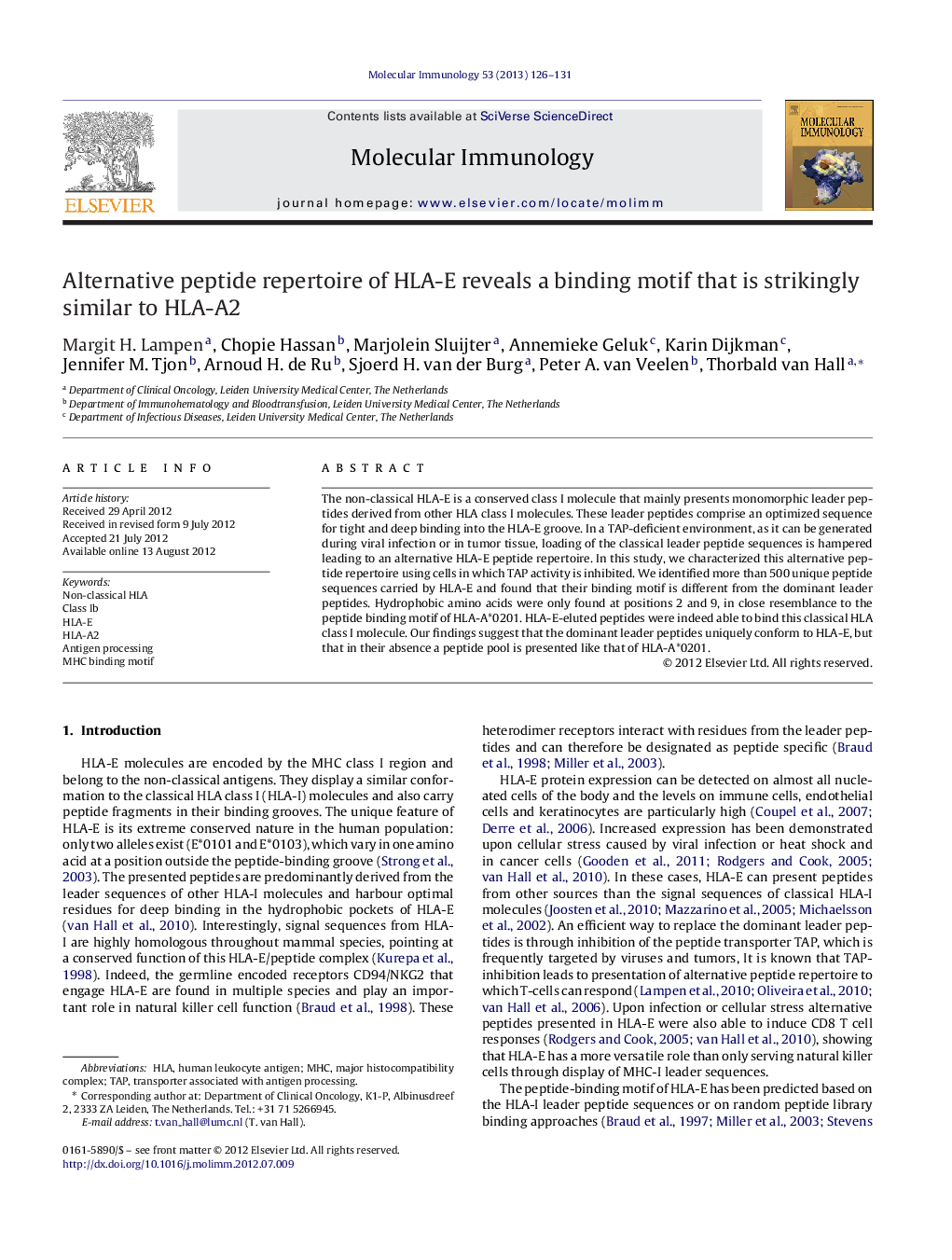| Article ID | Journal | Published Year | Pages | File Type |
|---|---|---|---|---|
| 2831142 | Molecular Immunology | 2013 | 6 Pages |
The non-classical HLA-E is a conserved class I molecule that mainly presents monomorphic leader peptides derived from other HLA class I molecules. These leader peptides comprise an optimized sequence for tight and deep binding into the HLA-E groove. In a TAP-deficient environment, as it can be generated during viral infection or in tumor tissue, loading of the classical leader peptide sequences is hampered leading to an alternative HLA-E peptide repertoire. In this study, we characterized this alternative peptide repertoire using cells in which TAP activity is inhibited. We identified more than 500 unique peptide sequences carried by HLA-E and found that their binding motif is different from the dominant leader peptides. Hydrophobic amino acids were only found at positions 2 and 9, in close resemblance to the peptide binding motif of HLA-A*0201. HLA-E-eluted peptides were indeed able to bind this classical HLA class I molecule. Our findings suggest that the dominant leader peptides uniquely conform to HLA-E, but that in their absence a peptide pool is presented like that of HLA-A*0201.
► TAP-impaired cells comprise a diverse peptide repertoire presented in HLA-E. ► The peptide binding motif of HLA-E is strikingly similar to that of HLA-A2. ► High binding capacity of HLA-E eluted peptides in HLA-A2, including Qdm. ► Similar findings in mouse homologue Qa-1.
